Blower Motor Problems on GM Vehicles
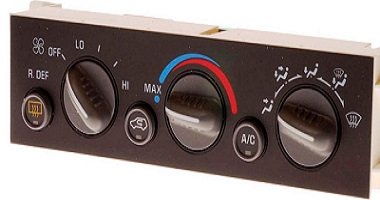
Back in the 70s and 80s blower motor problems with General Motors Corp. vehicles were almost unheard of.
However, they did require a lot of electrical energy. In an effort to increase the efficiency of the climate control systems General Motors experimented with some cutting-edge technologies.
Unfortunately, the fallout from this remains a large amount of vehicles with common blower motor problems. I guess I’m saying these systems didn’t age well.
Here we cover four extremely common and specific issues on cars and trucks from the General. These include the Chevrolet, Pontiac, Saturn, GMC and Buick automobiles.
With that said, the flagship Cadillac cars became a completely different animal in the HVAC department and not covered here. We stock factory Cadillac service manuals with wiring diagrams that can help you solve complex problems. Keep in mind for Chrysler owners I have a specific page about Dodge blower motor problems.
And for those that don’t fall into either of these categories I have a general knowledge video about how to diagnose automotive interior fan issues. You can apply the methods outlined in the video to most domestic and even some foreign automobiles.
GM Blower Motor Module Failure
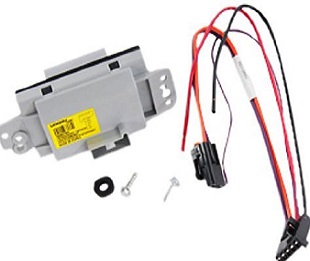
If you have a General Motors car or truck from 2002 through 2008 you’ll probably have a blower motor issue at some point.
In many cases it’s a problem with the GM blower motor module. The most common complaint when this part fails is the motor will not turn on at all.
However, it’s also possible for the blower motor to have speed control issues or continue running at all times even with the ignition off.
Intermittent operation is another big complaint when this part malfunctions. Let’s run through some basic diagnosis so you don’t replace this part in error. Now that these vehicles are getting old we can’t point at one item and say this is the root cause without further testing.
Testing the Control Module
Before we condemn the control module we have to take a good look at the blower motor itself. You can jump 12 V to the positive side of the motor and it should run. I recommend that you leave it fully installed when you run this test because the spinning squirrel cage can cause injury. If the blower motor works it’s time to check some voltages at the module.
 There’s a power wire that comes from the control panel. On most models it’s either red or purple. This power in wire should turn on a test light with the ignition on and maximum speed selected.
There’s a power wire that comes from the control panel. On most models it’s either red or purple. This power in wire should turn on a test light with the ignition on and maximum speed selected.
The black wire should indicate a strong ground. If you have a good ground and verified power into the module, yet have no electricity flowing to the fan you probably have a bad module.In many cases when I find the problem with the GM blower control module I also find signs of moisture in the heater case that contains the motor and module.
If the AC condensation drain becomes blocked you’ll wind up with water flowing into the HVAC case. The blower motor module is close to being the lowest point and will wind up sitting in a bath of water.
If you replace this part go the extra step and make sure that the condensation drain is clear on your AC evaporator. Also make sure your old blower motor spins freely and isn’t starting to bind.
Common Blower Motor Module Failure
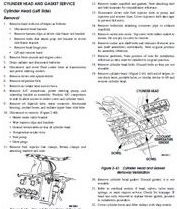 I have some final thoughts on the blower motor module failure situation. In an effort to streamline the manufacturing process and keep costs down, they installed these parts in a tremendous amount of different automobiles.
I have some final thoughts on the blower motor module failure situation. In an effort to streamline the manufacturing process and keep costs down, they installed these parts in a tremendous amount of different automobiles.
If you have a Buick Rainier, Chevrolet Impala, GMC or Chevrolet Silverado pickup that falls between model years of 2002 through 2008 it probably has the same set up. Oh and don’t forget the Envoy and Trailblazer. You can always check for technical service bulletins for your model.
If you decide to purchase this part off Amazon keep in mind that when you select your vehicle it might tell you that this will not fit. The AC Delco part they offer is an upgraded unit that carries a different part number than the original.
GM Mode Door Actuator Problems
Remember in the old days when the HVAC control panel had metal slide levers that controlled a vacuum device. Or if you go back a little further, a manual cable selected the position for the temperature and mode doors. They assured the car had the proper air flow for the selected temperature and direction.
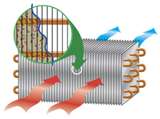
The temperature door decides if the air headed toward the interior compartment will flow through the heater core or the air conditioning evaporator.
The mode door actuator decides in which direction the air flows after it is heated or cooled. As an example, if you select defrost, the mode door points all the air at the windshield.
If you select heat, then the air will be directed at the floorboards. In the AC mode all of the air should come out of the air conditioning vents. If you select blend, then you’ll get air coming out of all of the positions. Keep in mind that in this blend situation air volume and speed is greatly decreased.
I mention this because sometimes drivers complain about low airflow and it’s actually a blend door problem, not focusing the air in the proper position.
The Climate Control Panel
Sometime in the late 90s General Motors decided that they would control their temperature and mode door operation with an electric stepper motor. These devices receive a signal from the climate control panel and set the door to the desired position. The problem is the early mode door actuators became unreliable.
Some of them had plastic gears inside that stripped. In this situation customers complained about clicking noises in conjunction with air conditioning or heater problems. On some vehicles the mode door actuator is easy to get at, but on some vehicles it’s diabolically difficult.
On General Motors vehicles built in the 2000 decade it’s not always an actuator problem. Therefore it will be necessary to perform some diagnosis.
This is one scenario where the dealership has a diagnostic tool that can make quick work of pinpointing the root cause. They can interface with the air conditioning control module and run the mode door actuator from one end to the other and verify proper operation. Unless your part is easy to get at I recommend some dealership diagnosis in this situation.
AC Climate Control Panel Problems
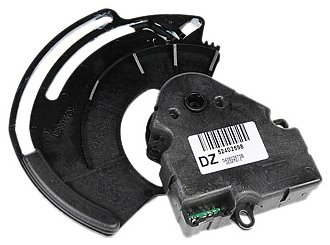
Here are some of the common complaints caused by a malfunctioning HVAC door actuating motor. Drivers will complain that the air conditioning suddenly goes from cold to warm. They may even hear a clicking noise under the dash. Owners can also complain when they select a mode on the AC control panel they don’t achieve the desired results.
As an example, you turn on the air conditioning and the cold air starts blowing at the foot location. In other situations, customers are looking to engage the windshield defroster and the system refuses to comply with the request.
Unfortunately, with all of these complaints, the problem can be from two main areas and several other less likely areas. Hence we need a diagnosis. You could have a malfunction with the mode or temperature door actuator motor.
On the other hand, you could have a problem with the AC climate control panel itself. This is a situation where incorrect signals are output from the panel module to the actuators. In addition to these issues you could have everyday car wiring problems related to poor or corroded connections.
There’s also a possibility that a ground integrity issue is the culprit. Again this is why it’s cost-efficient to pay for one hour of diagnosis at your General Motors dealer since they have the tools that plugs into your OBD II connector and make quick work of the diagnostic procedure.
As do-it-yourselfers we don’t like to pay the dealer to tell us what’s wrong with the car, but wasting money on parts that aren’t needed and spending the time replacing them is far less efficient than spending money on professional diagnosis.
Rear AC Module Tahoe Suburban 2000 -2006

There is one final issue I hear a lot of complaints about. The malfunction of the rear climate control system on General Motors trucks and sport utility vehicles that have a separate rear HVAC system.
The most common complaint is that the front air conditioning or heater unit performs as expected. However, the rear heat or air conditioning system has either intermittent or no operation. Again we’re finding a control module problem as the culprit. The rear mounted climate controls are located inside the rear passenger compartment next to the third row seats.
Once you get the interior plastic trim covers off, you’ll be able to see the rear HVAC controller module. Note that after you replace the module the system will need a reset and calibration. Again the dealership has the tool to perform these final steps of the operation. However, you can reset the system by pulling the yellow 60 AMP VSES/ECAS fuse located in the under hood convenience center.
After you remove the fuse you then start the truck and let it run for two minutes. Next shut it off and replace the fuse. After the yellow fuse is reinstalled start the truck and let it run for five minutes to allow the system to calibrate.
I like the old-fashioned cable and slide climate control systems General Motors used for 20 years or more. I understand their need to push the cars into the digital future. Unfortunately, it’s the customers that will have to pay to work out the bugs. Share this page with a friend having problems with General Motors climate control systems.

